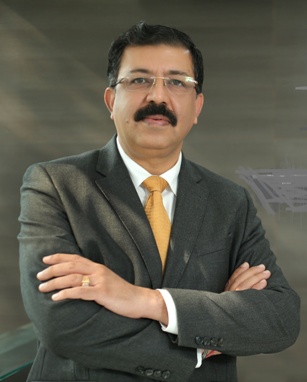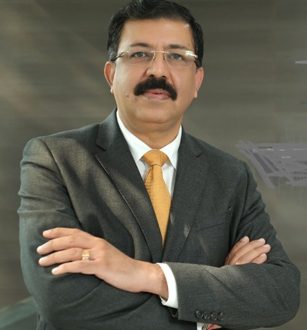
Odisha had made tremendous strides in the last couple of decades to become one of the fastest-growing states, rebooting effectively from the Covid impact. It is among the first few states in India to quickly bounce back to the pre-Covid level growth rate. According to Odisha’s Economic Survey 2021-22 released recently, the Gross Domestic Product (GDP) of the state grew at a rate of 10.1%, higher than the country’s GDP growth rate of 8.8%. In 2021-22, the state’s industrial sector grew at a rate of 14.5%, followed by the service sector at a rate of 7.9%. Investor-friendly policy decisions assisted in the state’s growth and development which is evident in numerous initiatives such as Make in Odisha, Industry Care, Mo Sarkar and reforms under Ease of Doing Business to drive consistent and rapid industrialization. Interestingly, the word ’empower’ has been emphasized 122 times in the economic survey which shows the government’s focus and efforts to empower the 4.5 crore people of Odisha and make them Aatmanirbhar. Many factors are aiding the state’s transformation including manpower, technology, infrastructure, and most importantly – reliable electricity. The Power Distribution sector is making the state shine on the map of India by supporting key growth parameters such as industrial development, technological advancement, socio-economic development and empowerment of people in Odisha.
Emerging as a manufacturing hub of eastern India
The state is on its way to becoming one of India’s most industrialised states and is fast emerging as the manufacturing hub of eastern India. This has increased electricity demand, and the power distribution sector has very well complemented the state’s growth requirements. Odisha is advancing on the path of industrial development, fueled by the metals and minerals sector. Iron and steel, aluminium and petroleum products account for a majority of the state’s total exports, and the government is ensuring that manufacturing units of these industries are supported. All these are power-intensive industries. For instance, energy consumption for most of the integrated steel plants in India is generally high at 6-6.5 Giga Calorie per tonne of crude steel, as compared to 4.5-5.0 in steel plants abroad as per information available from the Ministry of Steel website. However, the discoms in Odisha are keeping no stone unturned to ensure the seamless power supply needed for their growth.
Powering the growth engines of Odisha
Odisha was the first state in the country to initiate power sector reforms, looking into ways to privatise the sector in order to make it financially viable while also benefiting consumers. Even after previous attempts had failed, the Odisha government did not give up hope. It used the public-private partnership model and believed in Tata Power’s vision to transform Odisha’s Power Distribution sector. It is noteworthy here that power distribution companies (Discoms) throughout India struggle to pay to Gencos but all Odisha discoms pay their power procurement bills to Gridco without a single instance of default. In the first year of operation itself, all discoms have shown positive financial results indicating sustainable business operation in time to come without burdening the state exchequer for financial support.
Odisha, which was a power deficit state in the 1990s, is now a power surplus state. In 2019-20, the total installed capacity of all power projects in Odisha was 7423 MW, which grew by 8.02% to 8018 MW in 2020-21, as per an economic survey of Odisha tabled recently, in 2020-21, the average electricity demand was 2811 MW and average availability of power was 3514 MW. Power tariff has been rationalised for increasing the power consumption of industries to further revive the sector in Odisha post-pandemic. Power distribution companies in Odisha are playing an important role as a primary economic driver contributing to the industry and infrastructure development. Power networks that had structural weaknesses due to redundancy of single-source supply, as seen in Odisha, are getting upgraded to multiple-source power supply assurance. This is ensuring consistent power. Tata Power has committed an investment of Rs 5,000 crore in its four distribution companies (discoms) to improve reliability, reduce AT&C losses, and augment the network across regions. These discoms cover the entire state of Odisha catering to more than 9 million consumers in the state. Discoms have made significant strides by integrating technology for an efficient, uninterrupted, real-time power supply. For efficient and productive distribution network management, well-proven and cutting-edge technologies such as the Supervisory Control and Data Acquisition (SCADA) system, Advanced Distribution Management System (ADMS), and Geographic Information Systems (GIS) have been introduced. Odisha’s discoms not only ensure that customers have a reliable power supply, but they also empower their customers and play an important role in the state’s faster adoption of technology.
Discoms contribute to Odisha’s economic growth by assisting industrial consumers in meeting their power needs. Even the recent tariff reduction will have a significant impact on the growth of industrial consumers. Consistent network augmentation efforts have made the network cyclone-resistant, which earlier was a major concern not only for people in Odisha but also for the state, as it used to drag the state’s development programme and industrial functioning. The State Government’s support to discoms during the cyclone and in the initial stabilisation phase exemplified the true spirit of the PPP model, in which both partners ensured the business’s sustainability. Regions such as Kendrapada, one of the worst affected by natural disasters, its electricity network is now cyclone-resistant. Street lighting is ensured for the security and safety of people in Odisha. Teams are working 24*7 to monitor and record the peak load of primary sub-stations/feeders daily which avoids any breakdown. This helps in successfully predicting load forecasting and addressing any potential challenges. The Discoms also regularly conduct thermal scanning through ‘Thermal Imaging Cameras’ to study the health condition of equipment and carry out regular planned maintenance of its vast network to provide a reliable supply to its consumers and business hubs.
Making the state a land of opportunities
Discoms are taking steps for the overall socio-economic development of the underprivileged sections of society. In less than two years of operation, Odisha discoms have provided indirect employment to over 20,000 people and directly hired 2500 youths across all four discoms. Numerous vocational training centres have been established to assist youth and women in improving their skills and thus increasing their employability. Power discoms support over 1350 women self-help groups (SHGs) across the state, touching the lives of around 5000 women. This is not only helping in generating income and employment but is also contributing to the improvement in the standard of living of the local people and boosting the state’s economy. Envisaging the power sector’s vital role in the implementation of these reforms, the state government has increased its focus on meeting the needs of the power distribution industry.
The power distribution sector contributes significantly to a state’s economic growth and development by facilitating reforms, industrialization, urbanisation, and improvement in the standard of living, ensuring a great foundation and opening new possibilities for a Drudha Evam Samruddha Utkala. The benefits of developing a strong and economically viable power sector will pay long-term dividends in Odisha’s transformation, contributing to rapid economic development, attracting private capital, bolstering the Odisha government’s vision of a ‘New Odisha – Empowered Odisha’ and Atmanirbhar Odisha.
The author is the President – T&D, Tata Power Ltd.
 The Business Bytes
The Business Bytes
